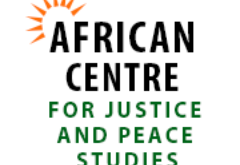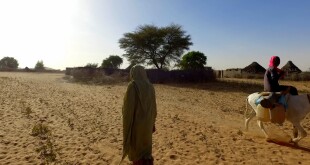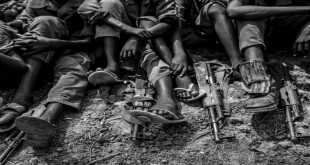(December 2010) In October 2010, a group of nine individuals, alleged to be affiliated with the Justice and Equality Movement (JEM) rebels in Darfur were sentenced to death by a judge in Nyala, South Darfur. They were found guilty of at least four charges (armed robbery, criminal damage, fomenting war against the state and offences against the state) in relation to a carjacking which had occurred in Khour Baskawit the previous May. The group included four minors: Ibrahim Shrief Yousef (17 years old, Birged Tribe), Altyeb Mohamed Yagoup, (16 years old, Zagawa Tribe), Abdalla Abdalla Doud, (16 years old, Gimr Tribe), and Abdarazig Daoud Abdelseed (15 years, Birged Tribe). The four minors sentenced to death had given their actual ages to the registry, but the court tried them as adults pursuant to medical examinations while they were in custody that determined they were over 18. There are no standardised procedures for determining age, and assessment is based on physical appearance. A fifth minor, Idriss Adam Abaker, was confirmed as a child on a second examination and his sentence commuted, but the court did not allow Ibrahim Shrief Yousef and Abdarazig Daoud Abdelseed to undergo the same examination. The group was tried by a Special Court established in 1997 to prosecute cases of hijacking and robbery; notably, the Court has significantly less judicial monitoring and oversight than other courts in Nyala.
The case is still being appealed and the juveniles have not been executed at the time of writing, but it highlights several disturbing trends related to the application of the death penalty in Sudan. First, it shows the government of Sudan’s lack of respect for international law. The prohibition against child executions is so widely accepted that only two countries have failed to ratify the international instruments upholding the norm and only five are reported to have actually carried it out in the last five years. Though the Sudanese Government has argued that in practice no child is ever actually executed and minors are sentenced to death to in order to collect diya, it can still be argued that the act of sentencing a child to death in light of the mental anguish imposed is in and of itself a rights violation, even if the sentence is never implemented.
Second, the case highlights the weaknesses and inconsistencies of national law. The Sudanese Interim National Constitution (INC) applies the international prohibition on the death penalty for children into national law by incorporating all international legal instruments to which Sudan is a party (Sudan ratified the Convention on Rights of the Child without reservation). However, the constitution subsequently undermines this protection by exempting hudud and qisas penalties from the overall prohibition of the death penalty in Sudan. Under the 1991 Criminal Code, certain hudud offences, including armed robbery, are capital crimes. Though the 2004 Child Law of Sudan attempted to rectify this gap in compliance with international law by restricting juvenile executions in principle, it defines a child as a person under 18, unless “they have reached maturity under other applicable law”. This opens the door to application of Article 9 of the Sudanese Penal Code of 1991 which allows for persons to be considered adults if they have attained puberty. There are similar conflicts at the level of ordinary laws between the 2010 Child Act and the 1991 Criminal Code.
Third, the status of the defendants as members of ethnic groups disfavoured by the Sudanese government and the implication of their affiliation with a rebel movement underline the potential ethnic and political undertones of the application of the death penalty. This relation is further underlined by the high profile sentencing of a large number of supposed JEM supporters in relation to the attacks on Omdurman in May 2008 and the subsequent role that this issue played in political negotiations.
This paper seeks to explore the legal and practical context within which the death penalty is applied in Sudan. It offers an overview of the role of the penalty in Sudanese law and the rights and guarantees to which individuals accused of offences punishable by the death penalty are entitled. It also offers an overview of recent cases, and places its current usage in the context of the historical development of the application of the death penalty in Sudan. The paper ends with an analysis of the way forward in advocating for the abolition of the death penalty, or at the very least the limitation of the scope of its application.
Download full report here.
This post is also available in: Arabic
 African Centre for Justice and Peace Studies ACJPS | المركز الافريقي لدراسات العدالة و السلام
African Centre for Justice and Peace Studies ACJPS | المركز الافريقي لدراسات العدالة و السلام



